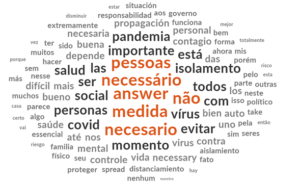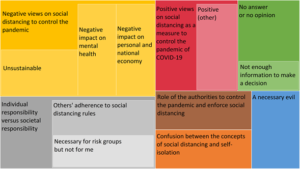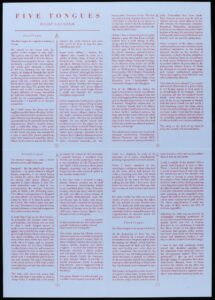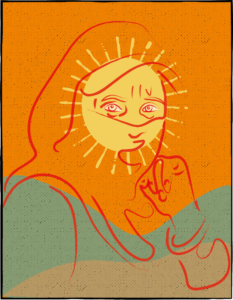The impact of COVID-related disruption on the moral economy of illicit drug distribution, by Angus Bancroft and Idil Galip
This project is funded by Chief Scientist Office of the Scottish Government
The Scottish Government estimates that there are between 55,800 to 58,900 people aged 15-64 years with problem drug use in Scotland, defined in terms of problematic opioid and/or benzodiazepine use. The figures are estimated through registration with drug treatment services, hospital admissions and criminal justice contact (Information Services Division, 2019). There is a much broader context of drug use with around 13.5% of the population using some illicit drugs in the past 12 months, most commonly cannabis, prescription painkillers not prescribed to the person taking them, cocaine and MDMA/ecstasy (National Statistics, 2021). Problem drug use is entangled with other modes of drug use such as recreational consumption, self-medication and self-care, and self-exploration. Illicit drugs are supplied through various pathways, such as diversion of pharmaceutical supply, or wholly illegal production and trafficking. They can be obtained through purely economic transactions or through mutual social supply (Coomber et al., 2016).
Like any other part of the economy, illicit drug distribution networks are susceptible to external shocks, labour shortages, reductions in income, changes in consumption patterns and other risks. Illicit supply networks have the additional problem of being disrupted by hostile entities: rival groups, predatory gangs and law enforcement agencies. Researchers can monitor illicit drug markets using pricing and other data and assess the impact of different shocks. Typically when we do that we find that they are resilient to most kinds if disruption. The supply of illicit drugs and labour is sufficient to absorb most of them.
COVID-19 represents an unusual challenge. The global nature of the lockdowns represents an unprecedented potential disruption to trade given it affected multiple systems at the same time:transportation was heavily affected and common air, sea and land routes were restricted. At the start of lockdown several hypotheses were proposed: that drug users would stockpile in response to the risk of unreliable supply, risky behaviour would increase as people who use drugs (PWUD) turned to unreliable sources or unfamiliar drugs, and consumption patterns would change as the result of changes in lockdown lifestyles.
Our project Understanding the health impacts of the COVID-19 response on people who use drugs in Scotland investigated the health effects of the pandemic on PWUD in Scotland. Scotland has a large number of highly vulnerable people who use drugs in its population, and a very high rate of drug related death. The effect of the pandemic was a matter of grave concern to an already at-risk group. One aim of the project was to understand the effects of changes in the drug supply market and how this affected especially disadvantaged people.
At the start we took a moral economy perspective. That views the market as a set of social relationships that are not purely about monetary exchange. The monetary aspects of the market are embedded in a web of reciprocal obligations, affective relationships, financial and moral debts and other ties which bind buyers and sellers together. These relations distribute risk and opportunity, reward some and disadvantage others. That meant we could not view the disruption to the market purely in terms of its practical effects. Understanding pragmatic decisions about what to do in response to short supply or rising prices was vital as these decisions affect peoples’ health and the risks they are willing to take. Beyond that it was also significant for their own relationships and sense of who they were as social individuals. These knock-on effects could prove significant in the lives of drug users.
Methodology
The study used survey data supplied by the drug support charity Crew, qualitative interviews with PWUDs, monitoring data from Police Scotland, darknet cryptomarket transaction data and information on the contents of drug samples submitted to WEDINOS. Between July and October 2020, we interviewed 29 people who use drugs and/or are in recovery. Sixteen were recruited via a homeless hostel in Edinburgh, two from a recovery community in Clackmannanshire, eight from a stabilisation service in Glasgow, and three from a Dundee support service. We interviewed 16 men (aged 28–56 years) and 13 women (33–44 years).
As with many other studies, we found that the pandemic reinforced existing inequalities. PWUD who were more affluent could generally ensure their supply continued. Users at the bottom level faced greater competition and greater disruption. Some found themselves tempted in drug dealing to make up for disruption to their income, and those who were already dealing faced difficult choices about risk. Here digital inequality mattered. Dealers who worked out of a house or other space they controlled, who had access to stable internet connection or who had a car could operate relatively undistributed and set the terms of trade for themselves. Those engaging in the lowest level, least lucrative criminal activity had to be prepared to take much greater risks.
Data Findings
The picture in the market overall was of an initial supply chain shock followed by recovery. That followed the pattern of inequality overall. Some users found that drug quality and choice was reduced. In an attempt to keep their customer base some dealers generally preferred to cut their drugs, reducing quality, rather than increasing prices, or extended credit to keep customers buying. Users were affected by reduced income and having to wait longer or work harder to find dealers.
Changes in consumption were longer lasting. As many of the opportunities for socialising were reduced by the lockdown, so many people turned away from what are characterised as ‘party drugs’ such as MDMA/ecstasy. On the other hand, a more varied pattern emerges with alcohol. 29% of Scots increased their drinking, and about the same proportion decreased theirs. Responses to the lockdown then depended a lot on the individual. Some sought to move to what were perceived as less harmful drugs like cannabis or reduce their use. Some used a wider range of drugs and engaged in greater risk practices such as injecting cocaine.
For the most vulnerable people, the moral economy is closely tied into their support network. Loss of income and reduced access to the support networks are a double whammy for users. Some reported dealers behaving more aggressively as a result of greater competition and lowered demand. The close relationship with the moral economy means that less affluent users have reduced room for manoeuvre when experiencing disruptions like that and limited resources to fall back on.
Impact
The project website, The Impacts of COVID-19 on People Who Use Drugs, was created to present emerging themes and findings and to invite comments from people who use drugs across Scotland on their experiences. The findings will also be shared with the Scottish Drugs Death Task Force https://drugdeathstaskforce.scot/ which has been established to form evidence based responses to support those at risk from drug related death in Scotland.
For more information on the project, please see: https://covid-drugs.stir.ac.uk
Team
Professor Catriona Matheson is a Professor in Substance Use at the University of Stirling and Chair of the Ministerial Drug Death Task Force for Scotland. She is also a Trustee of the Society for the Study of Addiction and Co-Convenor of the Drugs Research Network Scotland (DRNS), based at University of Stirling.
Josh Dumbrell is a Community Researcher in the Drugs Research Network for Scotland. His research interests include problem substance use, harm reduction, and Peer-delivered interventions for individuals with multiple and complex needs, unreached by more traditional approaches.
Professor Tessa Parkes is Director of the Salvation Army Centre for Addiction Services and Research at the University of Stirling. She holds a number of research grants related to prevention of substance use harms, is Deputy Convenor for the Drugs Research Network Scotland, and a member of Research England’s Research Excellence Framework Equality and Diversity Panel (EDAP).
Joe Schofield is a Research Fellow in the Faculty of Social Sciences at the University of Stirling. His research focuses on understanding and addressing drug-related deaths in Scotland with a focus on public health-informed approaches and quantitative methods. He is undertaking a PhD on the role of benzodiazepines in drug-related morbidity and mortality.
Idil Galip is a Research Assistant and Doctoral Student at the University of Edinburgh. She writes about memes, digital labour, markets and culture, and also runs the Meme Studies Research Network.
Angus Bancroft is a Senior Lecturer at the School of Social and Political Science at the University of Edinburgh. He is currently researching digital platforms in informal economies, AI for harm reduction, cyber-security, illicit markets and views of darknet users.
References
- Coomber PR, Moyle DL and South PN (2016) Reflections on three decades of research on ‘social supply’ in the UK. In: Werse B and Bernard C (eds.) Friendly Business: International Views on Social Supply, Self-Supply and Small-Scale Drug Dealing. Wiesbaden: Springer Fachmedien Wiesbaden, pp. 13–28. DOI: 10.1007/978-3-658-10329-3_2.
- Information Services Division, (2019) Prevalence of Problem Drug Use in Scotland. Edinburgh: Scottish Government.
- National Statistics, (2021) Scottish Crime and Justice Survey 2019/20: Main Findings. Edinburgh: Scottish Government.
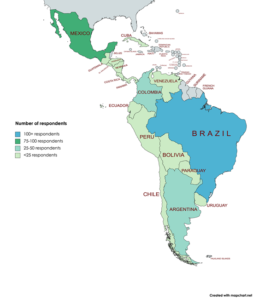 Figure 1. LATAM respondents’ self-reported country of residence
Figure 1. LATAM respondents’ self-reported country of residence